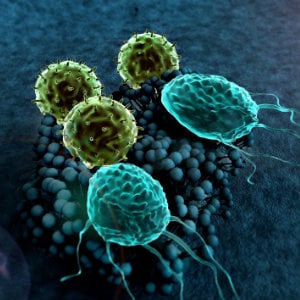blog
September 2, 2014 | Source: Rapid Micro Biosystems, Inc.
Fungal Contamination: 3 Commonly Overlooked Issues
POSTED BY Rapid Micro Biosystems | 5 minute read
September 2, 2014 | Source: Rapid Micro Biosystems, Inc.
POSTED BY Rapid Micro Biosystems | 5 minute read
 For pharmaceutical manufacturers, contamination is an obvious cause for concern. Fungal contamination, specifically, poses greater hazards to manufacturing clean areas than some manufacturers may realize. As such, opportunities exist to better address fungal contamination. In fact, Dr. Tim Sandle, head of microbiology at Bio Products Laboratory, recently wrote an article on the subject entitled, “Fungal Contamination of Pharmaceutical Products: A Growing Menace”, where he notes that, “Contamination risk posed by fungi to pharmaceutical products is greater than the level of industrial and academic interest would suggest.”
For pharmaceutical manufacturers, contamination is an obvious cause for concern. Fungal contamination, specifically, poses greater hazards to manufacturing clean areas than some manufacturers may realize. As such, opportunities exist to better address fungal contamination. In fact, Dr. Tim Sandle, head of microbiology at Bio Products Laboratory, recently wrote an article on the subject entitled, “Fungal Contamination of Pharmaceutical Products: A Growing Menace”, where he notes that, “Contamination risk posed by fungi to pharmaceutical products is greater than the level of industrial and academic interest would suggest.”
As part of the article, Dr. Sandle highlights some of the most commonly overlooked considerations related to fungal contaminations in QC labs:
Contamination by its very nature poses risks, regardless if it’s caused by bacteria or fungi. However, many labs aren’t as informed of the risks of fungal contaminations. First, this contamination can spoil or destroy the product being tested within a lab. Second, if a fungal contamination is not detected and the product is released, it can be hazardous to consumer health.
According to Dr. Sandle, more than half the world’s fungi found in the environment is potentially hazardous to one’s health. In pharmaceutical manufacturing specifically, two of the most common fungal contaminations are found through the inhalation of spores (breathing treatments, inhalers, etc.) and through contact with skin(creams and ointments).
Another commonly miscalculated aspect of fungal contamination, according to Dr. Sandle, is the high level of product recalls that are fungal related. Dr. Sandle’s research revealed the number of fungal incidents and recalls is increasing. Among the common reasons for many of the recalls are improper sterilization validation and deficiencies in aseptic processing, media fill failures, and package integrity deficiencies, all of which are easy to resolve.
Delving deeper into product recalls, Dr. Sandle found that when comparing recall periods (1990-1999 and 2000-2012), the number increased from 5 percent to 21 percent. This supports the claim that fungal contaminations are, in fact, on the rise—fungal contamination is, “the second highest microbial related reason” for a product recall.
With the increasing instances and detrimental nature of fungal contaminations, it’s crucial for manufacturers and quality control to take steps to mitigate the risk posed by microbial contamination. To avoid microbial contaminations, Dr. Sandle notes that the testing environment (including all materials and personnel) should be prepared in such a way that minimizes the chance for fungi to survive, grow and contaminate products.
Dr. Sandle highlights some key areas on which QC labs should focus in order to prevent fungal contaminations. A few are listed below.
In addition to the above, poorly ventilated areas or workspaces that cause insufficient air flow can lead to fungal growth and subsequent contaminations. Regarding contaminations as they relate to personnel, Dr. Sandle argues the extent to which this happens is greater than previously thought. Additionally, sample packaging items and other materials transferred into a QC lab’s workspaces also pose contamination risks.
Though the above influences may seem like common sense, they are often overlooked. And with fungal contaminations on the rise, it’s more important than ever pharmaceutical manufacturers put more emphasis on understanding and assessing these risks.
Through automated, non-destructive rapid testing, samples can be taken for identification faster, and fungal contaminations uncovered Learn more about the benefits of automation here.
Reference: Sandle, T. (2014) Fungal contamination of pharmaceutical products: the growing menace, European Pharmaceutical Review, 19 (1): 68-71